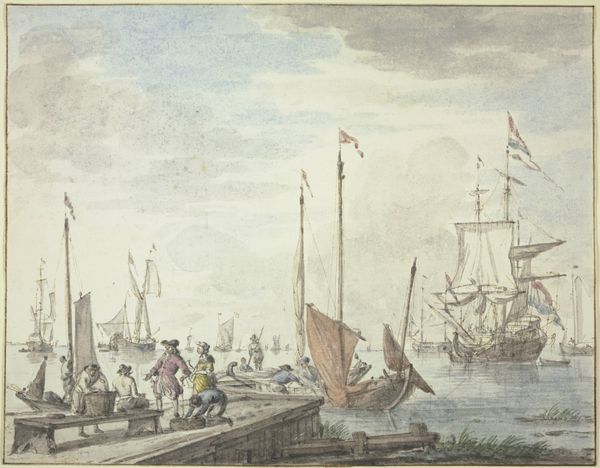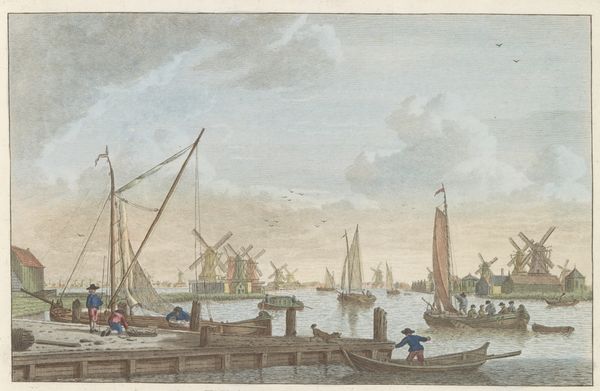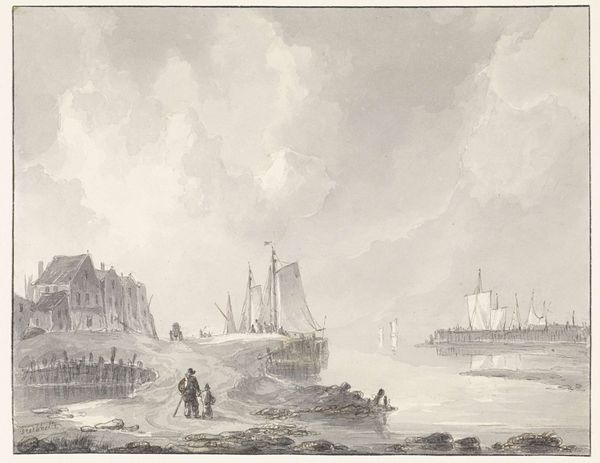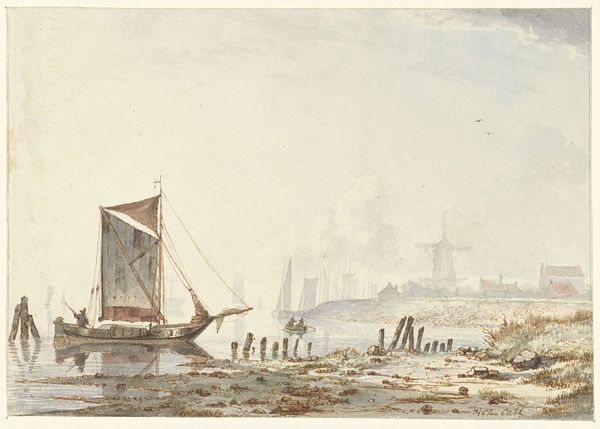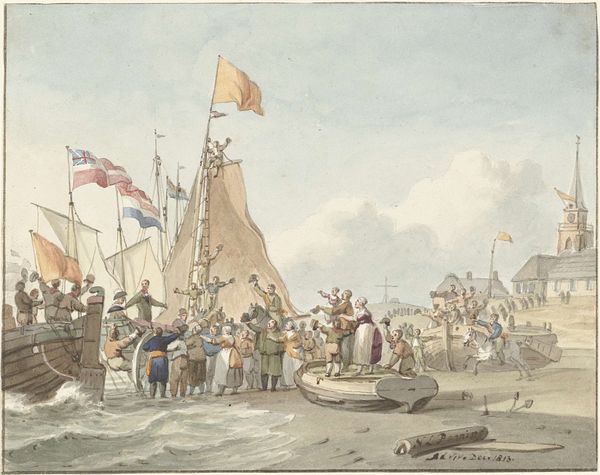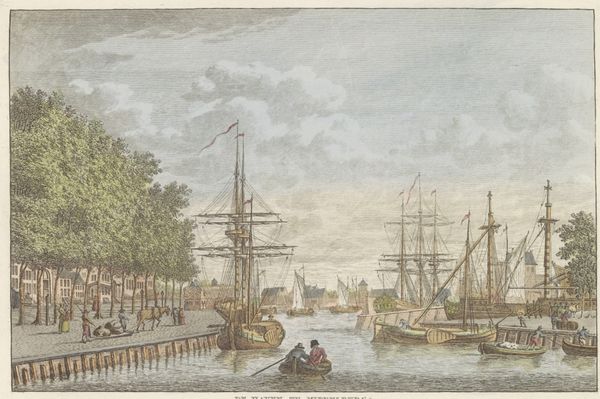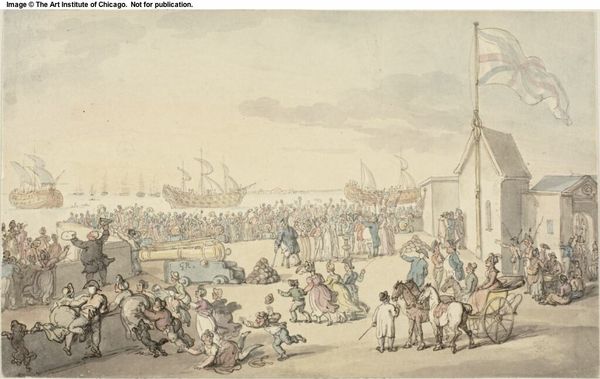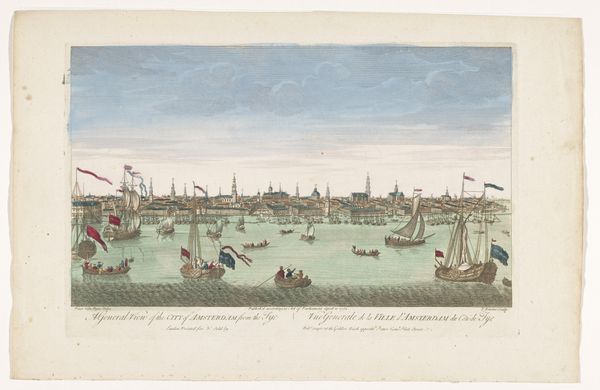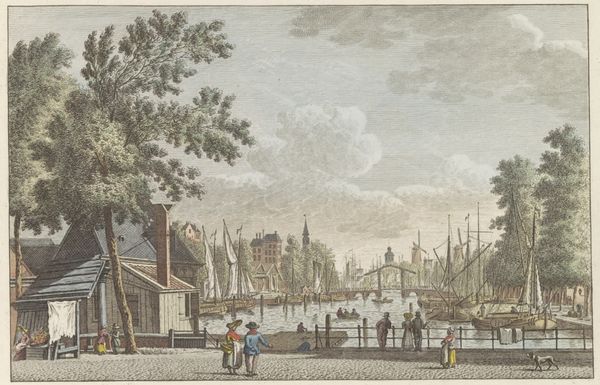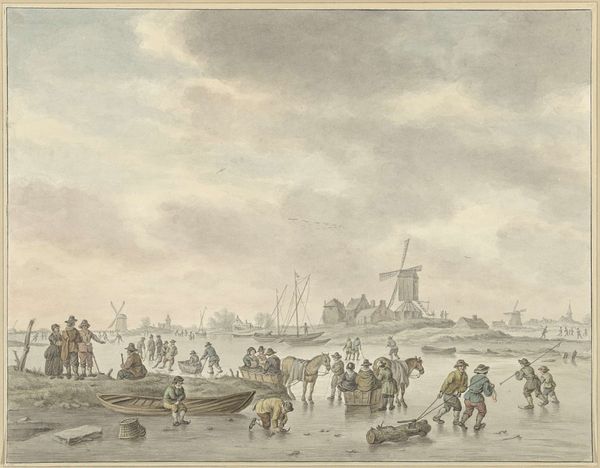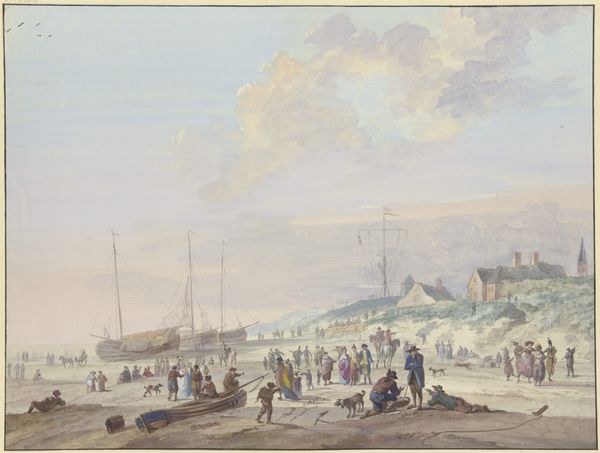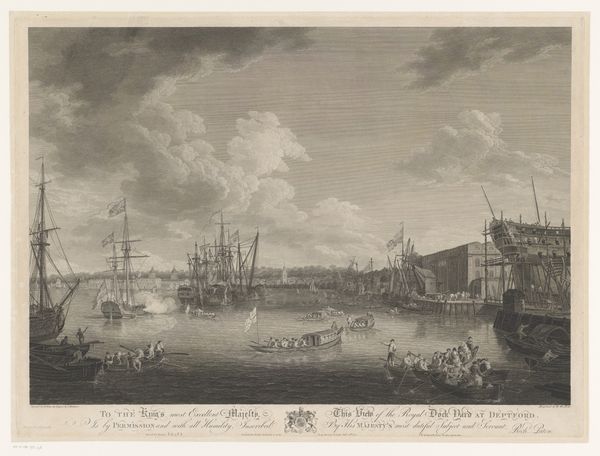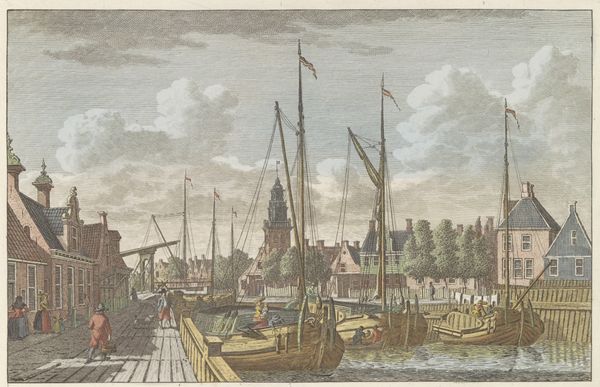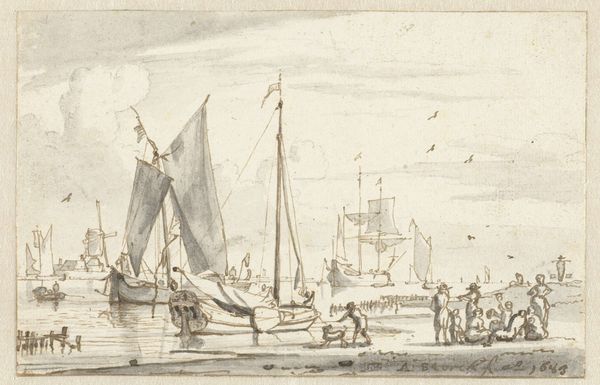
Dimensions: height 188 mm, width 265 mm
Copyright: Rijks Museum: Open Domain
Hendrik Kobell rendered this watercolor, "Frost Fair on a Frozen River with Ships," towards the end of the 18th century, a period defined by the Enlightenment’s emphasis on reason and observation. The work depicts a lively winter scene, a "frost fair," which was a common occurrence in Europe during periods of extreme cold, when rivers froze over, providing space for markets and celebrations. Kobell's choice of subject matter speaks to the intersection of social life and environmental conditions. The frozen river becomes a stage where people from various social classes converge: gentry stroll in their finery alongside commoners, and a man in a small sled is pulled across the ice. The ships loom in the background, silent witnesses to this temporary transformation of the river into a public space. While seemingly a celebration of communal joy, the painting also hints at the social stratifications of the time. The attire and activities of the figures reflect their social standing, revealing a society where leisure and luxury were not equally accessible. Kobell captures a moment of collective experience, yet one that is also subtly marked by the divisions of class and status.
Comments
rijksmuseum about 2 years ago
⋮
Draughtsman Hendrik Kobell, who died young, drew mainly marine and coastal views with ships. His hometown of Rotterdam had a large harbour, which traded extensively with England and America. After Hendrick Avercamp and Jan van Goyen, frost fairs – with people skating and walking on the ice and food stalls – had become a traditional genre in Dutch art. Kobell’s icebound ships added a new motif to the theme.
Join the conversation
Join millions of artists and users on Artera today and experience the ultimate creative platform.
